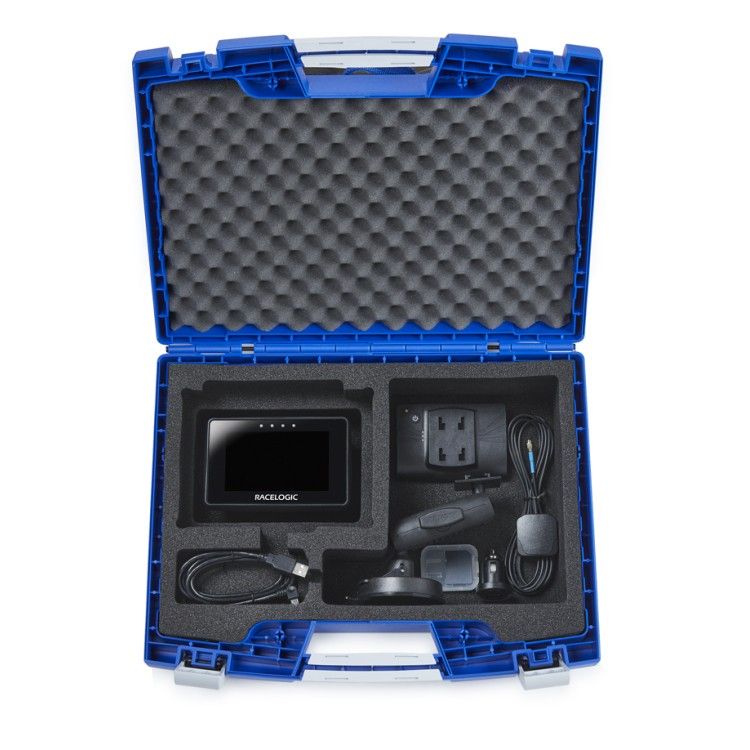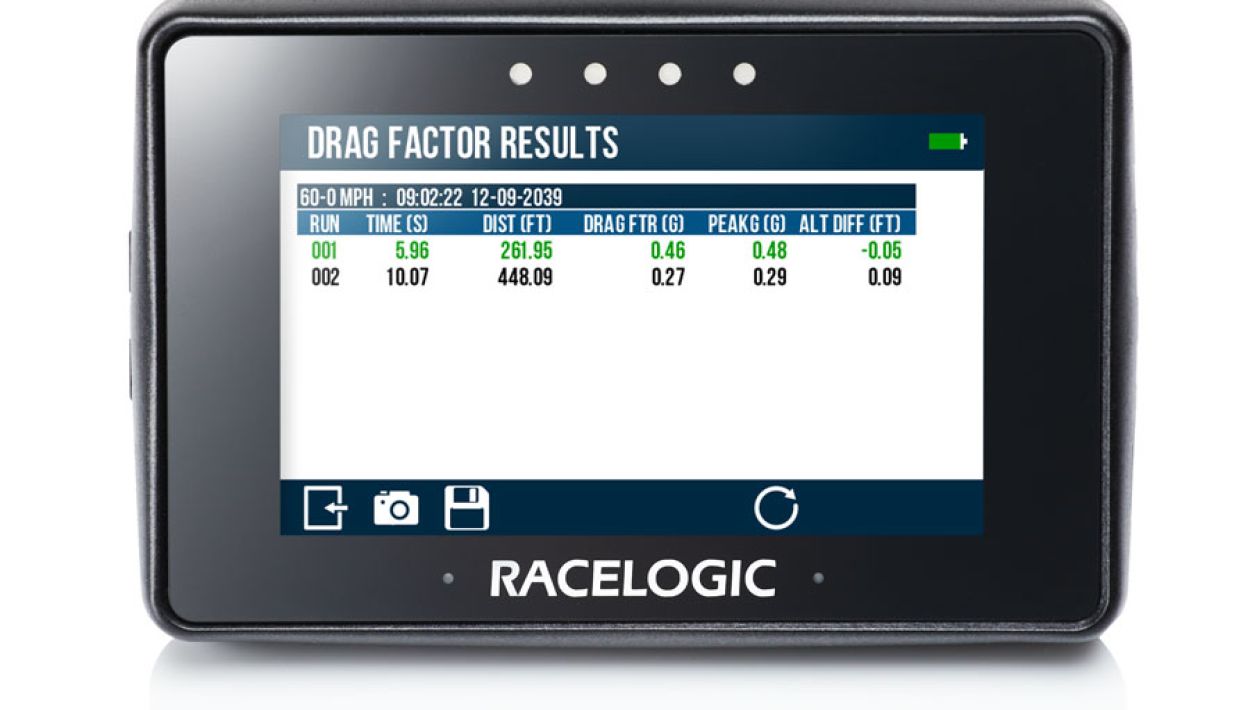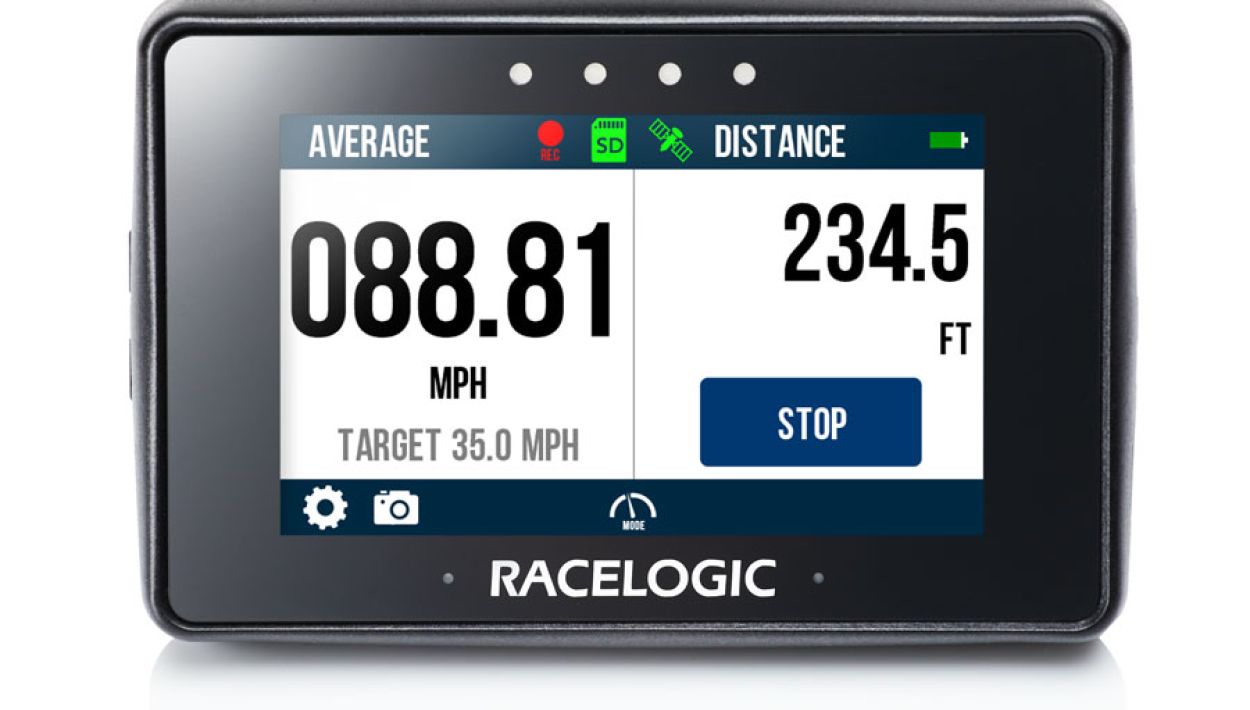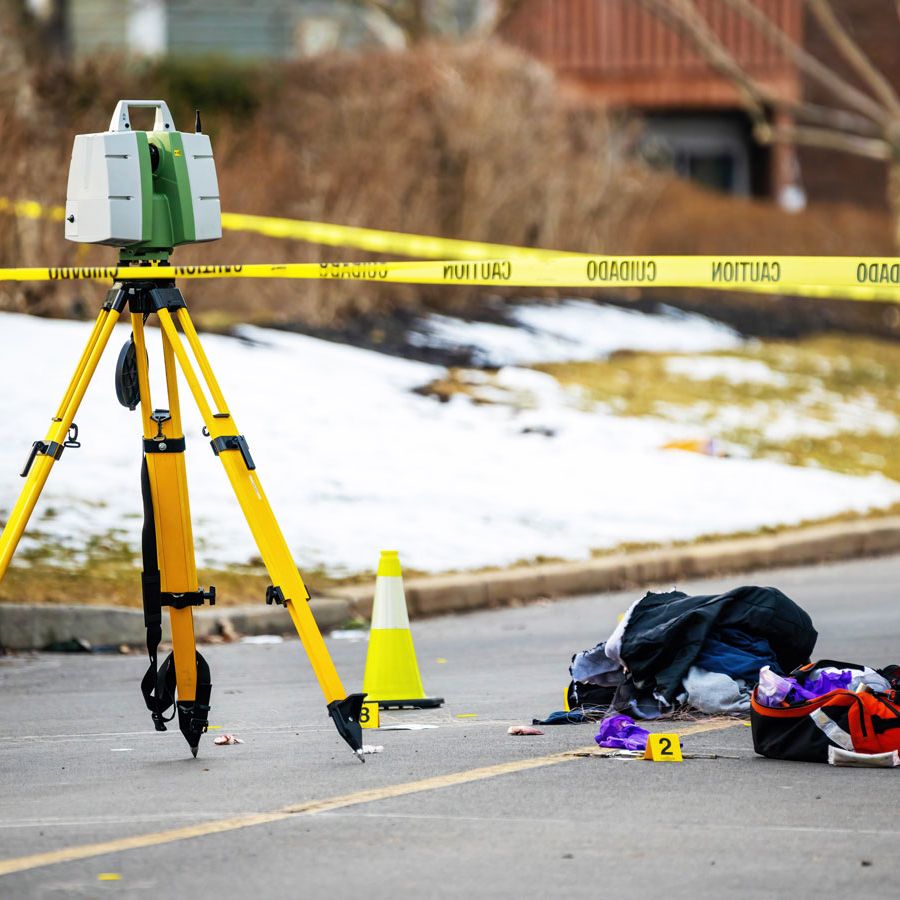Fast. Court-Ready. Repeatable
On-Scene Drag Factor / Friction Coefficient
Backed by peer-reviewed methods and trusted by police agencies worldwide, the VBOX Roadside Kit measures drag factor (f), speed and distance at the scene, with court-ready outputs.
Why measure the friction coefficient on scene?
Serious crashes demand fast, defensible evidence.
The VBOX Roadside Kit lets officers run quick, controlled skid tests on the same surface and conditions as the incident to record an accurate drag factor (f) – also called the coefficient of friction (μ) – with minimal setup.
One-touch operation, clear on-screen results, and standard exports keep the workflow simple, cut scene time, and preserve perishable evidence – so roads reopen sooner and documentation stands up in court.
The kit also measures average speed over a set distance and records lateral and longitudinal G-force, delivering clean, usable case files while simplifying scene documentation and forensic mapping.

Why choose VBOX Roadside Kit?

Preserve perishable evidence
Capture a scene-representative friction coefficient (drag factor) along with time, distance, and motion before conditions change.

Quick to deploy
Mount, power on, run a test. No survey kit or complex setup required.

Simple touchscreen workflow
One-touch operation with minimal training; clear on-screen results.

Courtroom ready outputs
Export standard CSV/TXT reports suitable for case files and disclosure.

ISO/IEC 17025:2017 calibrated
Equipment supplied with traceable certificates and documentation.

Compatible and practical
Works with in-vehicle power or battery; includes external antenna and suction mount.

No licence fees
Free analysis in VBOX Test Suite; share data without additional licences.
Life-time Product Support
High-quality, free support for the life of your product

What is included in the Roadside Kit?
- Performance Box Touch with pre-installed Drag Factor App
- In-vehicle power supply and battery pack with approximately 6 hours runtime
- Suction mount
- Rugged carry case
- Quick-start police setup guide
- Built-in GNSS antenna
- Additional external magnetic GNSS antenna if needed
- Free VBOX Test Suite analysis software
Drag Factor App Modes
Measure drag factor from controlled skid tests, validate average speed over a known distance, and record longitudinal and lateral G-force.

Drag Factor
Efficiently calculate deceleration and roadway drag factor (ƒ) from a braking or skid test.
- Automatically logs time, distance, peak G, and drag factor
- Results export in .CSV or .TXT with easy analysis in VBOX Test Suite
- Optimised reporting for court exhibits and internal reporting

Speed and Distance
Measure average speed over a defined distance using start and stop buttons on screen. Ideal for validating speed over long or short distances, such as checking against CCTV or speed cameras.
- One-touch operation while driving
- Speed and distance displayed in real-time on the touchscreen
- Event markers embedded in the results for post-analysis

G-Ball
Visualise lateral and longitudinal acceleration to document and explain vehicle motion. Useful for officer training and forensic scene mapping.
Who uses the VBOX Roadside Kit?
The VBOX Roadside Kit is a dedicated on-scene accident investigation tool for police agencies and collision investigation units. It enables officers to begin initial investigations on the same surface and conditions – where safe and feasible – shortly after an incident.
For advanced reconstruction and analysis, see our higher-end kits such as VBOX 4 + IMU05 or VBOX Video on the Accident Reconstruction page.

ACCIDENT, TRAFFIC, AND COLLISION INVESTIGATION UNITS

HIGHWAY PATROL AND POLICE FORCES FROM LOCAL TO FEDERAL

POLICE TRAINING ACADEMIES AND DRIVING STANDARDS UNITS
FAQs
Drag Factor = Deceleration coefficient for an entire vehicle
In the context of vehicles, a "drag factor" is a measure of the overall deceleration for an entire vehicle, taking into account the sliding friction of all tires, vehicle weight, and other factors. Often used by investigators to determine a vehicle's speed from skid marks.
Relationship to friction: It is an effective measure of all forces resisting a vehicle's motion, including tire friction, but also the effects of a slope and braking efficiency, which can make it different from the simple coefficient of friction of the tires alone.
Drag Factor and Coefficient of Friction are often used interchangeably, especially by police officers, however there is a slight difference.
- The Coefficient of Friction is the deceleration coefficient for a sliding tire.
- The Drag Factor is the deceleration coefficient for an entire vehicle.
The Drag Factor and Coefficient of Friction are the same, if and only if, all four tires of a motor vehicle are locked and sliding on a level surface.
The accurate coefficient of friction/drag factor is important when trying to determine how fast a vehicle was traveling prior to a traffic accident.
Measuring the friction coefficient at the scene, particularly in the context of traffic accidents or forensic analysis, is critical for accurately reconstructing the events and improving the reliability of accident identification.
The friction coefficient is highly dependent on specific environmental factors such as surface finish, temperature, humidity, and the presence of contaminants (e.g., oil, water, debris) at the exact time and location of the incident. These transient conditions cannot be reliably replicated later in a laboratory setting.

